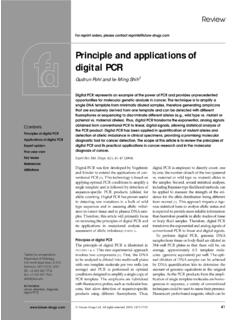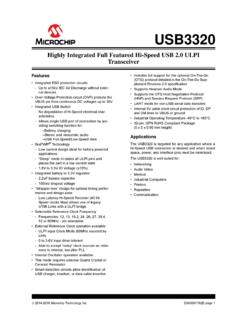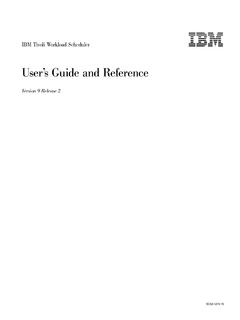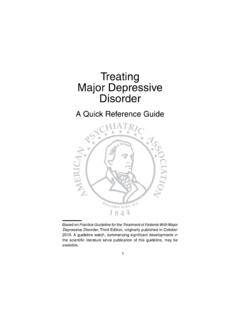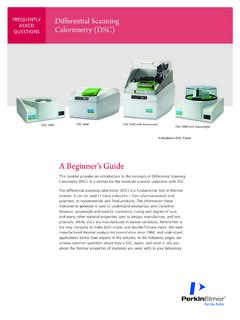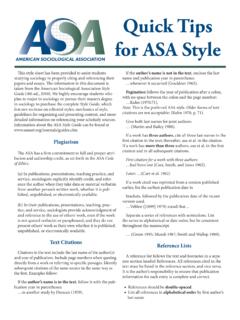Transcription of Analysis of Relative Gene Expression Data Using Real-
1 METHODS 25, 402 408 (2001). , available online at on Analysis of Relative Gene Expression data Using Real- Time Quantitative PCR and the 2 CT Method Kenneth J. Livak* and Thomas D. Schmittgen ,1. *Applied Biosystems, Foster City, California 94404; and Department of Pharmaceutical Sciences, College of Pharmacy, Washington State University, Pullman, Washington 99164-6534. of the target gene Relative to some reference group The two most commonly used methods to analyze data from Real- time, quantitative PCR experiments are absolute quantifica- such as an untreated control or a sample at time zero tion and Relative quantification.
2 Absolute quantification deter- in a time-course study. mines the input copy number, usually by relating the PCR signal Absolute quantification should be performed in situ- to a standard curve. Relative quantification relates the PCR signal ations where it is necessary to determine the absolute of the target transcript in a treatment group to that of another transcript copy number. Absolute quantification has sample such as an untreated control. The 2 CT method is a been combined with Real- time PCR and numerous re- convenient way to analyze the Relative changes in gene Expression ports have appeared in the literature (6 9) including from Real- time quantitative PCR experiments.
3 The purpose of this report is to present the derivation, assumptions, and applications two articles in this issue (10, 11). In some situations, of the 2 CT method. In addition, we present the derivation and it may be unnecessary to determine the absolute tran- applications of two variations of the 2 CT method that may be script copy number and reporting the Relative change useful in the Analysis of Real- time, quantitative PCR data . 2001 in gene Expression will suffice. For example, stating Elsevier Science (USA) that a given treatment increased the Expression of Key Words: reverse transcription polymerase chain reaction; gene x by may be more relevant than stating quantitative polymerase chain reaction; Relative quantification.
4 That the treatment increased the Expression of gene x Real- time polymerase chain reaction; Taq Man. from 1000 copies to 2500 copies per cell. Quantifying the Relative changes in gene Expression Using Real- time PCR requires certain equations, as- sumptions, and the testing of these assumptions to Reserve transcription combined with the polymer- properly analyze the data . The 2 C T method may be ase chain reaction (RT-PCR) has proven to be a power- used to calculate Relative changes in gene Expression ful method to quantify gene Expression (1 3). Real- determined from Real- time quantitative PCR experi- time PCR technology has been adapted to perform ments.
5 Derivation of the 2 C T equation, including quantitative RT-PCR (4, 5). Two different methods of assumptions, experimental design, and validation analyzing data from Real- time, quantitative PCR ex- tests, have been described in Applied Biosystems User periments exist: absolute quantification and Relative Bulletin No. 2 (P/N 4303859). Analyses of gene expres- quantification. Absolute quantification determines the sion data Using the 2 C T method have appeared in input copy number of the transcript of interest, usually the literature (5, 6). The purpose of this report is to by relating the PCR signal to a standard curve. Rela- tive quantification describes the change in Expression present the derivation of the 2 C T method, assump- tions involved in Using the method, and applications of this method for the general literature.
6 In addition, we present the derivation and application of two varia- 1. To whom requests for reprints should be addressed. Fax: (509) tions of the 2 C T method that may be useful in the 335-5902. E-mail: Analysis of Real- time quantitative PCR data . 402 1046-2023/01 $ 2001 Elsevier Science (USA). All rights reserved. Analysis OF Real- TIME PCR data 403. or 1. THE 2 CT METHOD. XN (1 E ) C T K, [6]. CT. Derivation of the 2 Method The equation that describes the exponential amplifi- where XN is equal to the normalized amount of target cation of PCR is (X0 /R0) and CT is equal to the difference in threshold cycles for target and reference (CT,X CT,R).
7 Rearranging gives the Expression Xn X0 (1 EX)n, [1]. XN K (1 E ) C T. [7]. where Xn is the number of target molecules at cycle n of the reaction, X0 is the initial number of target The final step is to divide the XN for any sample q by molecules. EX is the efficiency of target amplification, the XN for the calibrator (cb): and n is the number of cycles. The threshold cycle (CT). indicates the fractional cycle number at which the XN,q K (1 E ) CT,q (1 E ) C T. [8]. amount of amplified target reaches a fixed threshold. XN,cb K (1 E ) CT,cb Thus, Here CT ( CT,q CT,cb). XT X0 (1 EX)CT,X KX [2] For amplicons designed to be less than 150 bp and for which the primer and Mg2+ concentrations have been properly optimized, the efficiency is close to one.
8 There- where XT is the threshold number of target molecules, fore, the amount of target, normalized to an endogenous CT,X is the threshold cycle for target amplification, and reference and Relative to a calibrator, is given by KX is a constant. A similar equation for the endogenous reference (internal control gene) reaction is amount of target 2 C T. [9]. RT R0 (1 ER)CT,R KR, [3]. Assumptions and Applications of the 2 CT Method where RT is the threshold number of reference mole- For the CT calculation to be valid, the amplification cules, R0 is the initial number of reference molecules, efficiencies of the target and reference must be approxi- ER is the efficiency of reference amplification, CT,R is mately equal.
9 A sensitive method for assessing if two the threshold cycle for reference amplification, and KR amplicons have the same efficiency is to look at how is a constant. CT varies with template dilution. Figure 1 shows the Dividing XT by RT gives the Expression XT X0 (1 EX)CT,X KX. K. [4]. RT R0 (1 ER)CT,R KR. For Real- time amplification Using TaqMan probes, the exact values of XT and RT depend on a number of factors including the reporter dye used in the probe, the se- quence context effects on the fluorescence properties of the probe, the efficiency of probe cleavage, purity of the probe, and setting of the fluorescence threshold.
10 Therefore, the constant K does not have to be equal to one. Assuming efficiencies of the target and the refer- FIG. 1. Validation of the 2 C T method: Amplification of cDNA. synthesized from different amounts of RNA. The efficiency of amplifi- ence are the same, cation of the target gene (c-myc) and internal control (GAPDH) was examined Using Real- time PCR and TaqMan detection. Using reverse EX ER E, transcriptase, cDNA was synthesized from 1 g total RNA isolated from human Raji cells. Serial dilutions of cDNA were amplified by Real- time PCR Using gene-specific primers. The most concentrated X0 sample contained cDNA derived from 1 ng of total RNA.
